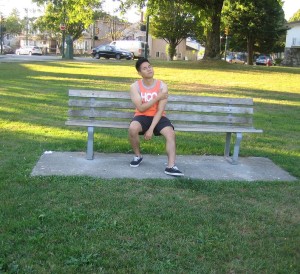A broken collarbone is a common form of injury. It can occur among infants, children and adolescents as well as athletes or during accidents or falls.
What are the indications?
Generally, an individual with a broken collarbone complains of shoulder pain and difficulty in moving the affected arm.
The usual signs of the injury include:
- Pain or aching sensation over the collarbone
- Evident deformity or disfigurement of the collarbone
- Difficulty raising the affected arm from the side
Generally, an individual with a broken collarbone complains of shoulder pain and difficulty in moving the affected arm. - Swelling and bruising on the shoulder. After some time, the bruising can spread down the chest and armpit.
- Tingling and numbness can occur down the affected arm.
Once the individual is taken to the emergency department or doctor’s clinic, an X-ray is taken to check for the specific type of fracture. The doctor will perform an exam to guarantee that the nerves adjacent the clavicle are intact. Remember that the blood vessels and nerves are rarely damaged but can occur in severe cases.
Management of a broken collarbone
The treatment for this injury is achieved by allowing the bone to recuperate or performing a surgical procedure to restore the correct alignment of the bone and secure it in place.
The doctor will discuss the advantages and drawbacks of surgery. Even though most cases of the injury can be managed without surgical intervention, there are instances in which surgery can provide a better outcome.
Different types of supports can be used as part of the non-surgical treatment for a broken collarbone such as a sling or a figure-8 brace.
What is the outcome?
A broken collarbone is expected to heal within 12 weeks, but the pain typically settles within a few weeks. Oftentimes, an individual can return to his/her activities before 12 weeks, especially the younger ones.
Generally, pain should not be triggered during activity. If not using a sling triggers discomfort, a sling must be worn. Once any activity no longer triggers pain, a gradual return can be tried.
Full recovery can be achieved but the individual might notice a bump at the site of the fracture. Take note that this should not be bothersome in any way.
More Information / Disclaimer
The information posted on this page on a broken collarbone is for learning purposes only. Learn to recognize the signs and how it is treated by taking a standard first aid course with Red Deer First Aid.

